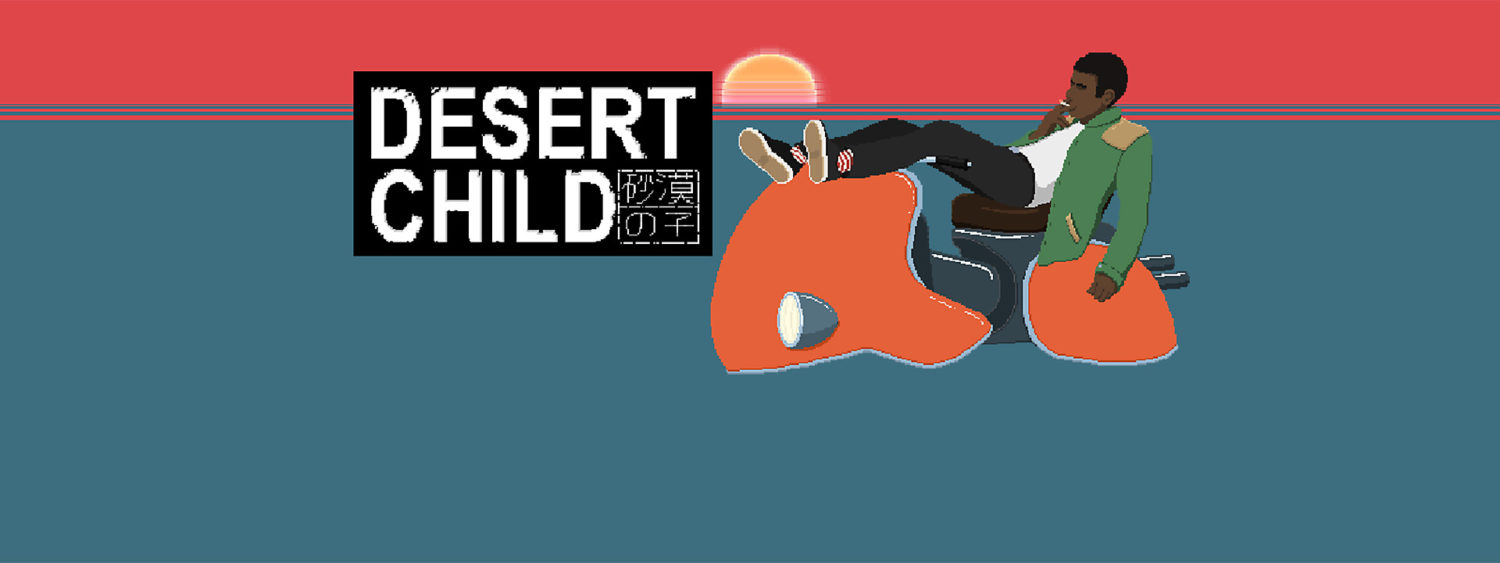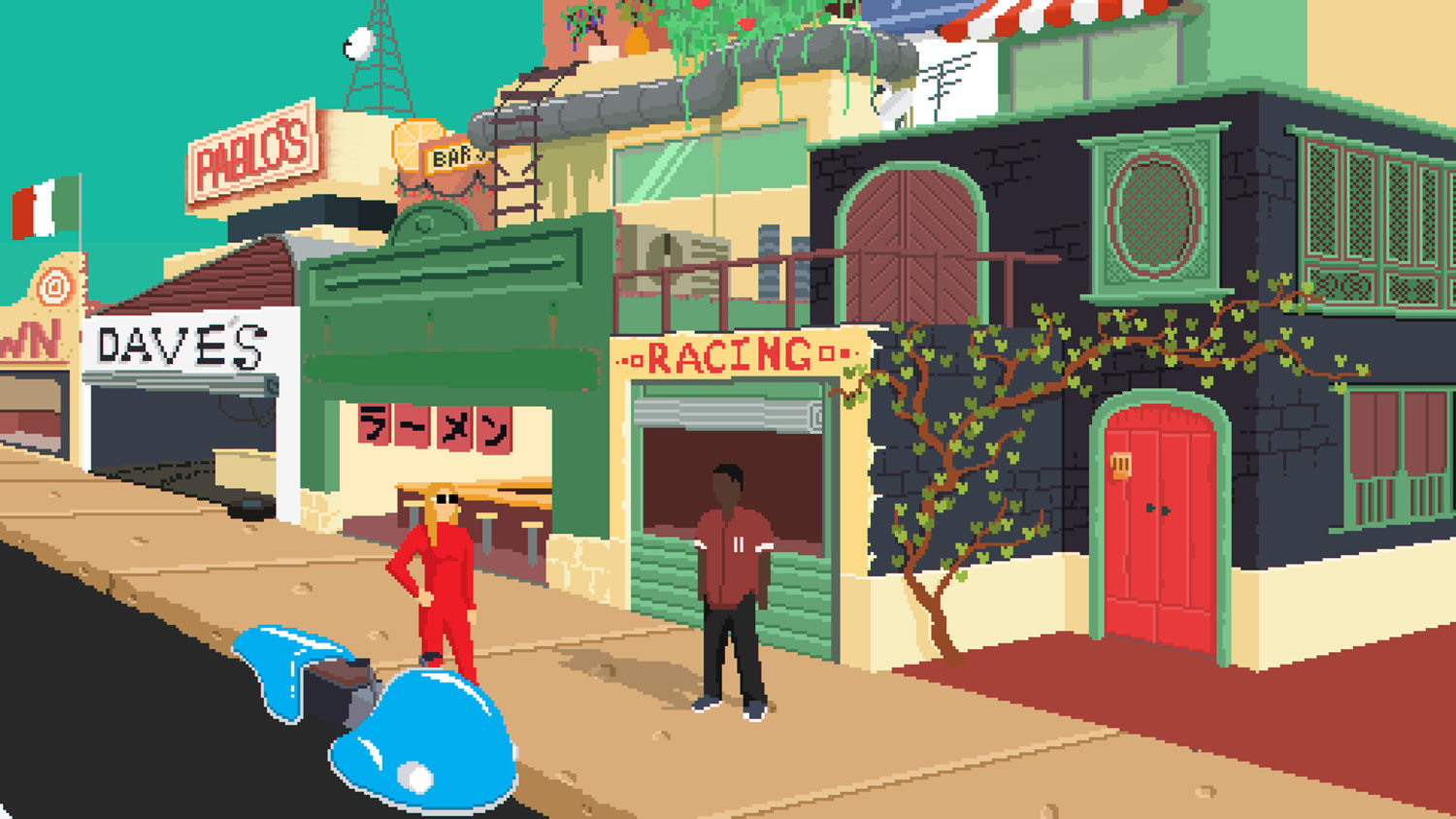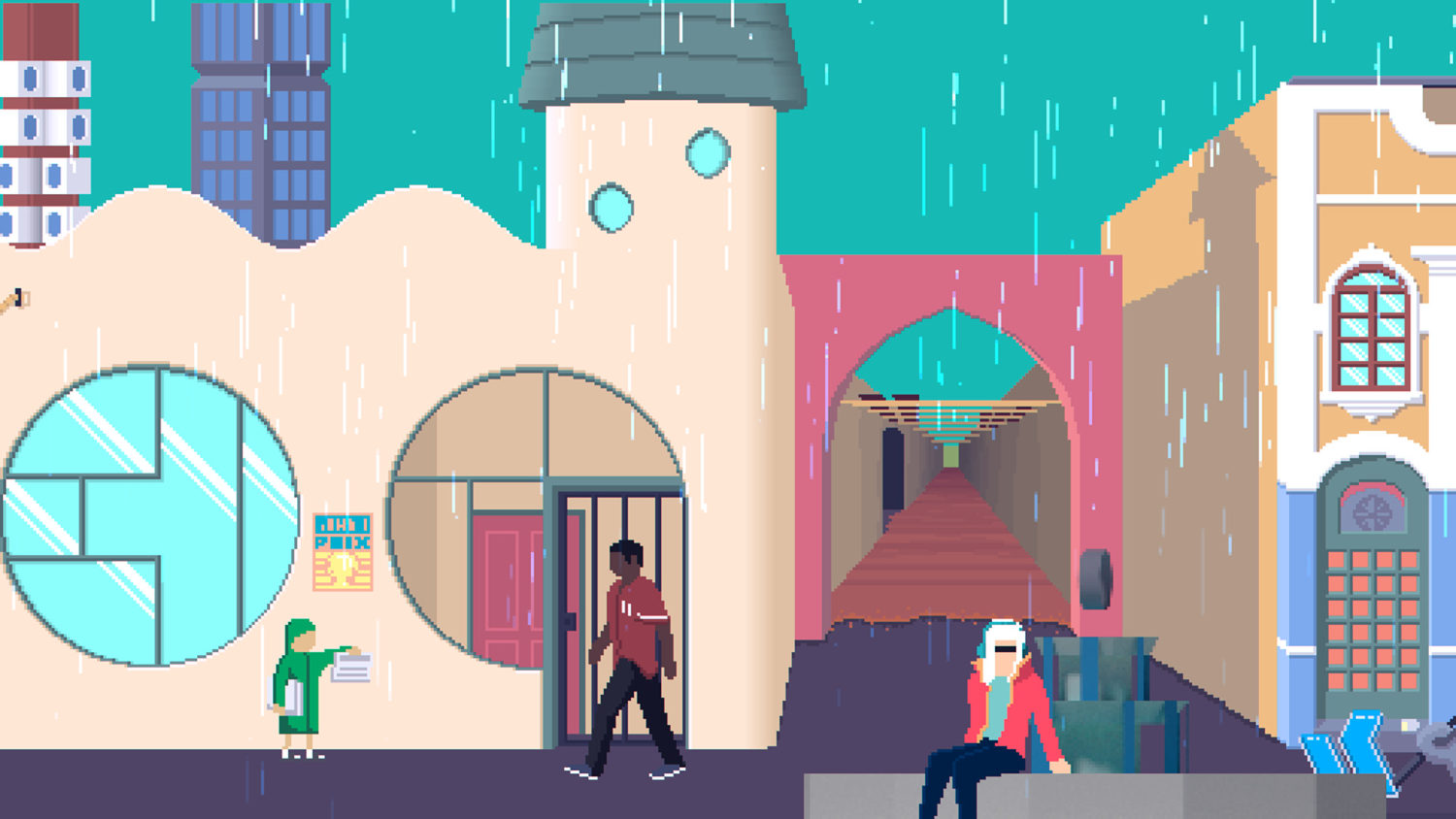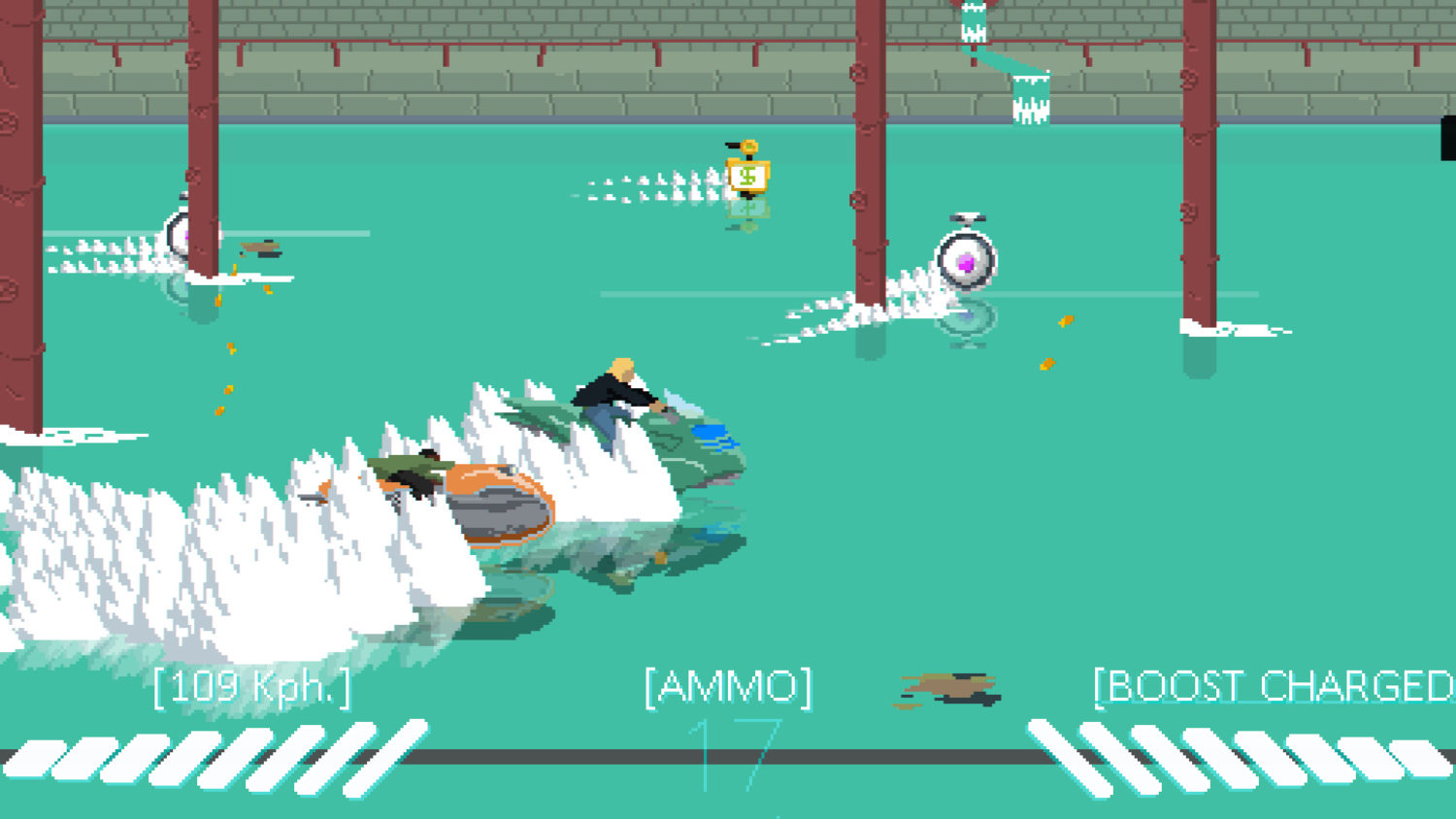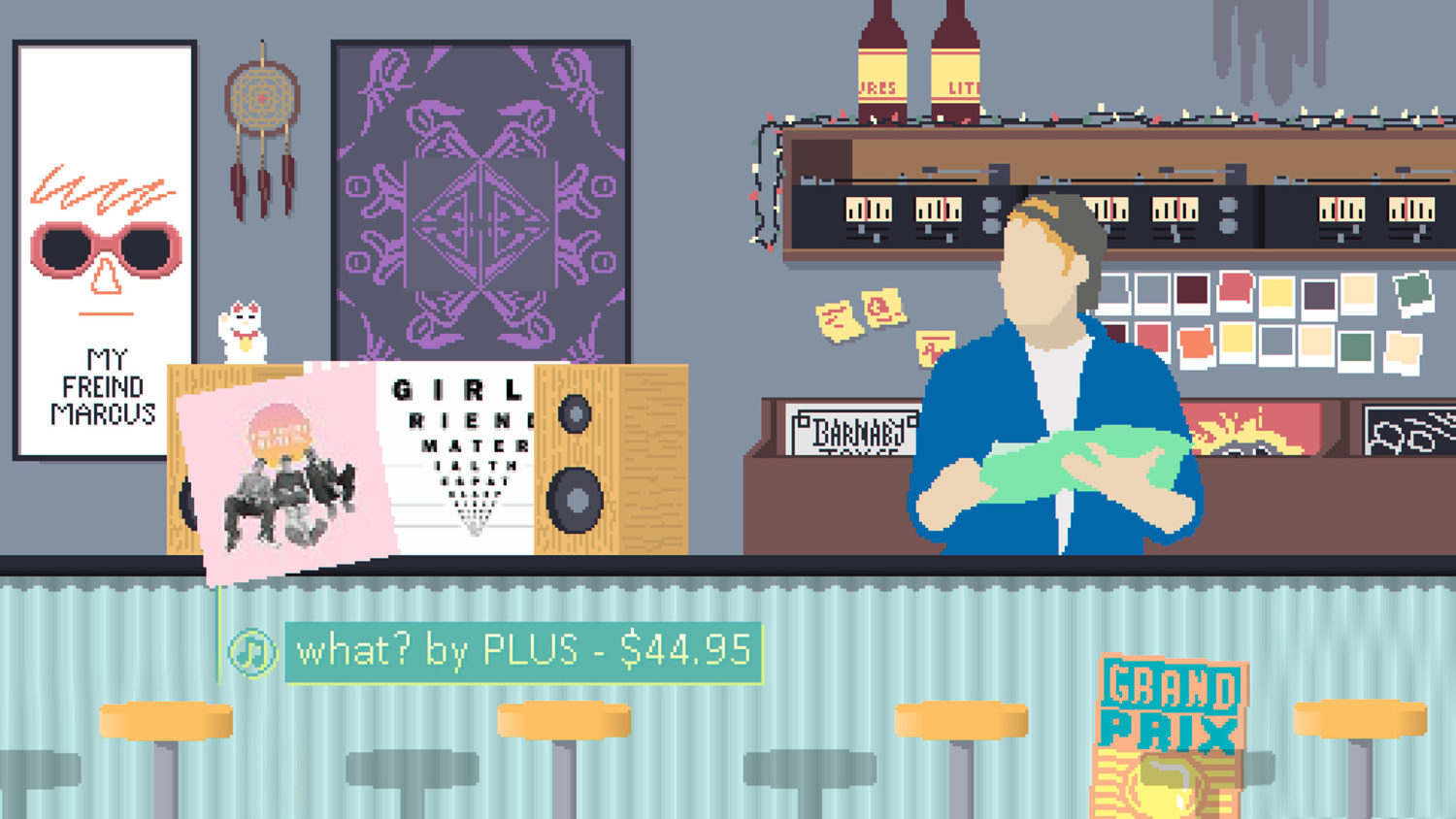From the hip-hop soundtrack to the detailed pixel art to the cyberpunk junk-heap aesthetic, the world of Desert Child is one that’s easy to just get lost in. The game sees you competing in races, walking through the streets of Mars and just trying to survive the monotony of day-to-day life. A lot of love went into this game, so it pains me to say that it isn’t very fun.
I suspect that to be the point. The game sees you competing in races, delivering pizzas and doing dirty work to make enough dosh to compete in the Grand Prix. Each day asks players to once again do the daily grind and race, race, race.
Races are side-scrolling ordeals where players must beat opponents while avoiding obstacles, managing your boost meter and gunning down the competition. There is a small variety of weapons to choose from in Desert Child, be it a pellet-shooting machine gun to a laser that hits hard, yet needs to be charged between every shot. Rivals and obstacles alike can be shot, but ammo is limited. The player must either break ammo boxes on the track or drive into a supply ship for a refill.
This side-scrolling “drive and shoot” style carries over into the game’s various odd jobs. For pizza delivery, you ride a bike and toss pizzas at pedestrians. During bounties, you focus on shooting down a target and avoid getting taken out yourself. For hacking the bank, you drive through a vaporwave datascape while destroying Greek busts of Helios. Desert Child gets a lot of mileage out of its game style, but at its core, you’re still avoiding objects and shooting at things. These mission variations feel more akin to reskins of the same thing.
You’ll be doing these missions a lot, by the way. Entry to the Grand Prix is $10,000, and tasks netted me around $350 if I performed well. Your pay is based on how well you do on each mission. This adds an aspect to the game where it’s wise to gravitate towards the jobs you’re best at. It then becomes a matter of how much you can tolerate doing those jobs.
The other half of Desert Child is spent wandering the streets of Mars, looking for food, fixing up your bike, buying some vinyls and just hanging out. Your walk speed is irritatingly slow, but just seeing the streets feels cozy, especially in the rain. The music in this game is pretty great too. Putting on a sweet track while just standing around and taking in the atmosphere is my favorite part of the title. This aspect of the game also adds an interesting risk-reward element: do you save some cash and let your performance slip by leaving your bike in disrepair and going hungry? Or do you go without making it to the Grand Prix that much longer and do some upkeep?
I might have enjoyed Desert Child more if they had cut the racing bits and just let you chill in this run-down city on Mars. It’s visual design and soundtrack are absolute treats. I have a feeling this is going to be a love-it or hate-it game for a lot of people. Take a look at the screenshots and check out the Cowboy Bebop-inspired launch trailer. If you think you can put up with the simple, repetitive gameplay and want to drown in the game’s aesthetic, check out Desert Child. If you’re here for a solid game, it ain’t on Mars.
Review: Desert Child (Nintendo Switch)
Average
Desert Child is one of those “love-it-or-hate-it” titles. On one hand, it’s got a great soundtrack and excellent visuals. On the other, its gameplay is dull and repetitive. Be sure you know what you’re getting into with this one.

